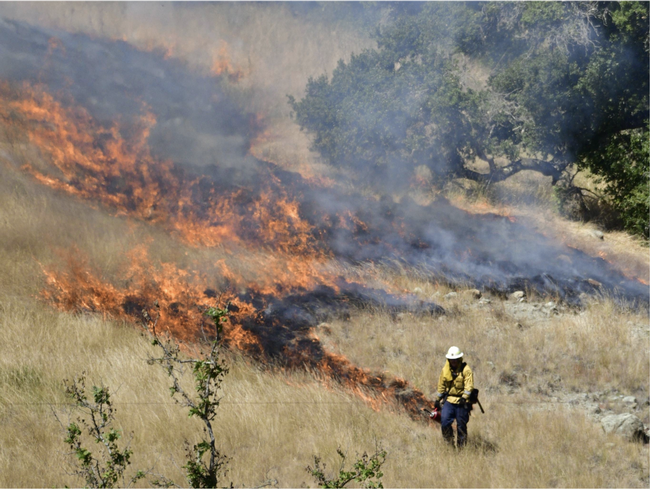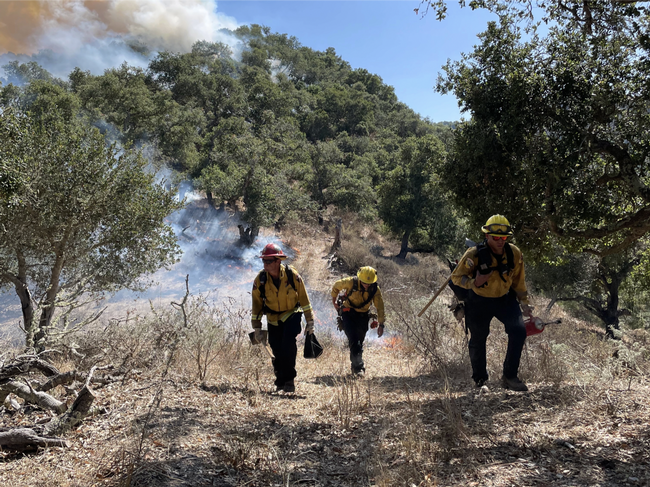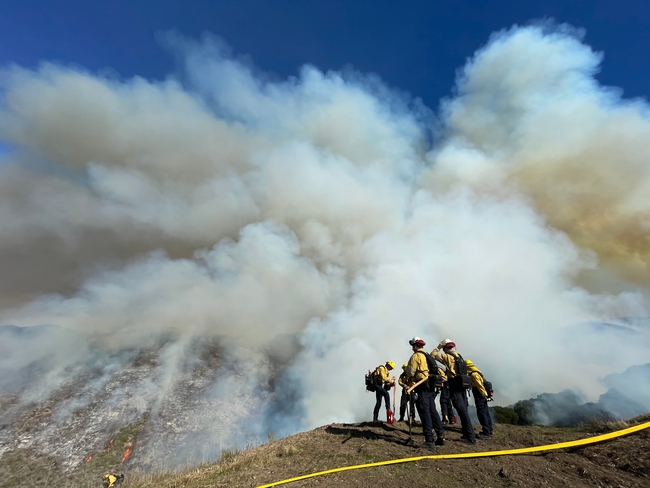This July, San Luis Obispo county's first cultural burn since 1850 took place. This reintroduction of indigenous, ‘good fire' to the landscape was led by the yak tit?utit?u yak ti?hini Northern Chumash Tribe, who worked in collaboration with city officials and the California Department of Forestry and Fire Protection (CALFIRE). Being involved with the burn was a standout moment for CALFIRE San Luis Obispo Unit (SLU) forester Dave Erickson, whose work often brings him in close collaboration with a variety of community stakeholders.
For Erickson, being a unit forester in San Luis Obispo is dynamic work within a unique area. He notes how the county “stretches from the ocean to alkali deserts” and is home to “tons of different microclimates, which require different types of management”.
For example, though oak woodlands are commonly associated with the region, Monterey pine restoration will be a focus for Erickson later this year. CALFIRE will be working with the San Luis Obispo Fire Safe Council to reforest and reduce fuels in the Cambria Monterey Pine Forest, an effort funded by a California Forest Health Program grant. “This is a super unique and rare habitat, and Monterey pines are affected by a number of different pathogens such as mistletoe and canker. They require active management in order to be healthy and sequester carbon,” he explains.
Though the county is rich in differing ecosystems, Erickson points out a common feature: for a fire-adapted region, the absence of fire over the past 100 years has led to a creeping lack of plant biodiversity. He says, “There are areas [here] that haven't seen fire in a long time, they're crowded out.” Getting fire on the ground, whether prescribed fire or cultural fire, is essential for reducing that crowding, and giving rarer plants the opportunity to grow and thrive.
Erickson's position also brings him in close collaboration with local landowners. He described a project where CALFIRE worked to perform a prescribed burn on a private property in the Long Canyon area: “We got to know the landowners really well, and they were very supportive of what we were doing.” Positive landowner attitudes towards prescribed fire and vegetation management projects are common, with Erickson pointing to the county's long history of resident-driven land management. The county's Rangeland Improvement Association is one of the oldest in California, and organizations like the Fire Safe Council encourage what Erickson describes as community motivation to “help one another...get landscape level projects done”.
Though county residents are accustomed to seeing hand crews at work and smoke from prescribed fires, CALFIRE SLU also aims to increase public understanding of why these projects are necessary. Erickson shared that one of the ways CALFIRE SLU has increased its public outreach is through the online platform ArcGIS StoryMaps. CALFIRE SLU's StoryMaps detail two ongoing CALFIRE vegetation management projects on SRA land, and invite curious viewers to explore each project's methodology, environmental outcomes, and monitoring protocol.
CALFIRE SLU's StoryMaps and this summer's cultural burn help increase public understanding of forest management, while also illustrating the necessity of collaboration when implementing landscape-level projects. This feature of forestland management is something Erickson sees as applicable for any forest landowner: “We [CALFIRE] work with a lot of partners to get projects done. No agency can do it all alone. [Management] takes a lot of time, effort, collaboration, and partnership. Create relationships with your local CALFIRE [unit], RCD [resource conservation district], UC ANR [office], and people who can give you information.”


